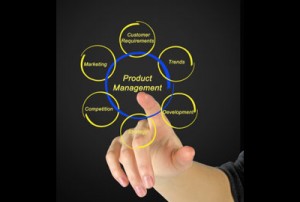The Role of the Product Manager on a Mobile App Development Team
By John Houghton on January 11, 2014

Mobile app development has pulled in many people from outside the software industry, and one role that outsider CEOs, investors, and stakeholders frequently don’t understand is that of the Product Manager.
In this article I explain what a Product Manager does and why they’re important to a mobile app development team’s success. In software and app development, the Product Manager is the product owner. They are the CEO of the product.
At a single app company the CEO is sometimes also the Product Manager. You could say that the main job of the Product Manager is planning, specifically, planning the next release of software and bringing together all of the elements to make sure it is well built and successful in the marketplace. The Product Manager is responsible for the following:
— Laying out the strategic product roadmap.
— Keeping feelers on customers, competitors, and the market to see where the product should be going.
— Writing requirements documents for the next release, and socializing them with the organization.
— Supporting the engineering build-out of the product, and sales efforts for the product.
— Overseeing and contributing to user documentation and training; outbound marketing; product support, and handling support escalations; including quality assurance and release management.
I like to think of the Product Manager as the buffer between the development team and the rest of the world. If you put a customer in a meeting with your developer (a.k.a. engineer), they might frustrate each other, because the customer is not technical and speaks in their own language, while the engineer is very technical, speaks their own language, and thinks in absolutes. The customer might ask if a certain feature is possible, and the engineer might take their requirements very literally and tell them it’s totally impossible.
Sometimes the customer is an investor in the app project. I’ve seen engineers send investors out of a meeting in a huff and nearly cancel the whole project, when all that was needed was the presence of the Product Manager to do some translation. “What the engineer was saying was that it’s impossible to have x, y, and z, because x and y don’t mix, and it’s totally impossible to combine the two! That’s why the engineer got so excited and obstinate! The truth is if you do x and z first then carefully add y, then you can get it to work.” But the customer didn’t say it like that, so the engineer told the truth and dug in their heels. So you can see, both sides were correct, but what you really needed was a buffer in the middle. The customer’s requirements need to be translated so that engineers can digest them. Then the engineer’s constraints need to be rationalized before communicating back to customers, investors or stakeholders. Product Managers are that buffer, because they understand and can communicate with both sides.
Mobile Product ManagerAd
Hire the best mobile product manager today! Strategy counts!
Here in Silicon Valley it’s a well-known practice to not put developers/engineers in the same room as stakeholders (customers/investors), but really this depends on the engineer. Sometimes, if you have engineers that are more seasoned, they understand the market, and maybe have had a “people job” previously in their career. Usually the more functional (planning and designing product functionality) the person is, the less technical they are, and as a result they are not as effective at programming. Once in a while, you’ll find a jack of all trades that is good at both, but I’ve only met a few people in my career that are good programmers and also have the people skills and flexibility to then turn around and sell the product to a customer.
While we’re on the subject, the same is true of design. In most cases, you shouldn’t ask an engineer/developer to do anything visual, such as coming up with graphics for your app. Software engineers know ones and zeroes, not colors and shapes. I’ve only met one engineer in my life who knows Photoshop, and he’s an exception. By the same token, a traditional Product Manager doesn’t usually have Photoshop skills either, but they know how to bring in the right people and manage the project such that the app will be designed to appeal to the target customer. It’s very important that the Product Manager has enough time to do the job and is available to the other team members. This is especially important if the CEO is playing the role of Product Manager.
When I talk to people new to the software industry who want to build an app, they always ask where they can find developers, but the biggest cause of failure in the marketplace is usually not a technical issue but a functional one. The biggest cause of app failure is apps that are designed and built without understanding the audience and how that audience would use the app. It’s the Product Manager’s job to understand the user, discern their use patterns, and design an app that meets their user’s needs. The main tool the Product Manager uses is the requirements document. Some people call this a design document, and there are formal names for the different flavors of this document, but it’s beyond the scope of this article to explain them all, except for one of them, and that’s the Product Requirements Document. Please read my next article, The Product Requirements Document (PRD): The Swiss Army Knife of App Development. If this article was helpful, please share it!
Posted in Android Apps, Enterprise Mobile Apps, iOS Apps, iPad Apps, iPhone Apps
Comments
Comments
Leave a Comment







